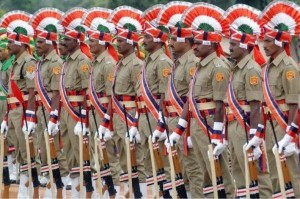The U.S.-led invasion after 9/11 marked a turning point in the Indian investment in Afghanistan, and it has been able to steadily re-establish its presence. The greatest benefit of the current situation is that New Delhi has employed the soft-power approach as it has the tacit cover of U.S. and NATO security forces. This means that New Delhi has stuck to civilian rather than military matters while getting involved in Afghanistan. In consonance with the priorities laid down by the Karzai government, Indian assistance has focused on building human capital and physical infrastructure, improving security and helping the agricultural and other important sectors of the countrys economy. The Indian government is building roads, providing medical facilities and helping with educational programs in an effort to develop and enhance long-term Afghan capabilities.
Indian prime minister Manmohan Singh used his visit to Kabul in May 2011 to send the message that, unlike the West, New Delhi has no “exit strategy” from Afghanistan.
New Delhi is the sixth-largest bilateral donor to Afghanistan, having pledged some US$1.3 billion on various projects. Important infrastructural projects undertaken include the construction of electricity transmission lines, the Salma Dam power project in the Herat province, and the construction of the Afghan parliament building. India will also help in the expansion of the Afghan national television network and undertake several smaller projects in agriculture, rural development, education, health, energy and vocational training. The 218-kilometer Zaranj-Delaram highway, enabling Afghanistan to have access to the sea via Iran and providing a shorter route for Indian goods to Afghanistan, was completed by Indias Border Roads Organisation (BRO) in 2008 despite stiff resistance from the Taliban. A 300-strong paramilitary force ensured the safety of the Indian workers and allowed the project to beat construction and monetary deadlines.18
Indian prime minister Manmohan Singh used his visit to Kabul in May 2011 to send the message that, unlike the West, New Delhi has no “exit strategy” from Afghanistan. His first trip to Kabul in six years came at a crucial time””with the U.S. preparing for a troop drawdown and U.S.-Pakistan relations strained by the discovery and killing of Osama bin Laden in Abbottabad and the killing of 24 soldiers by a NATO air strike at the end of November 2011. Apart from the usual pledges about giving Afghanistan more money for its economic reconstruction, the two new developments that underscored the importance of the visit were Indias support to Afghan president Hamid Karzais peace efforts with Taliban insurgents and the announcement of a “strategic partnership.”





